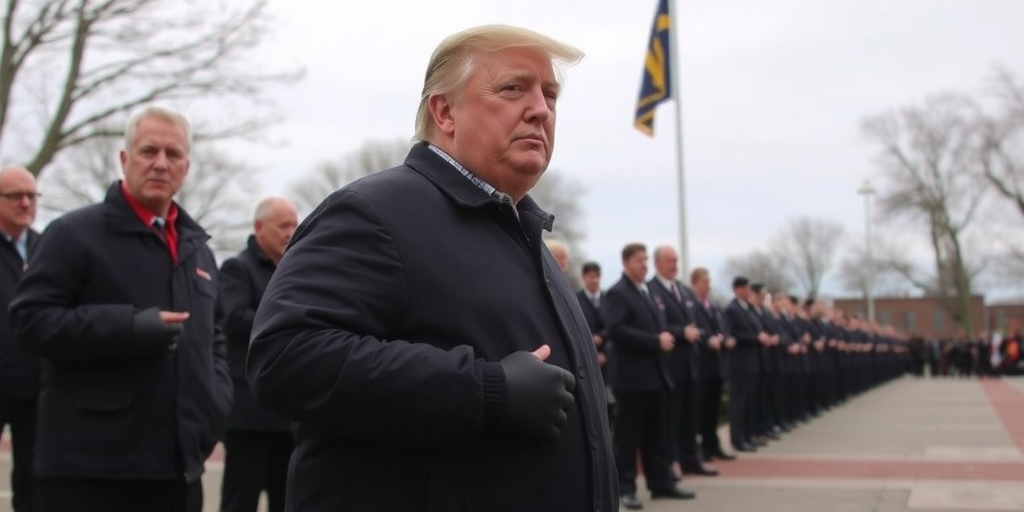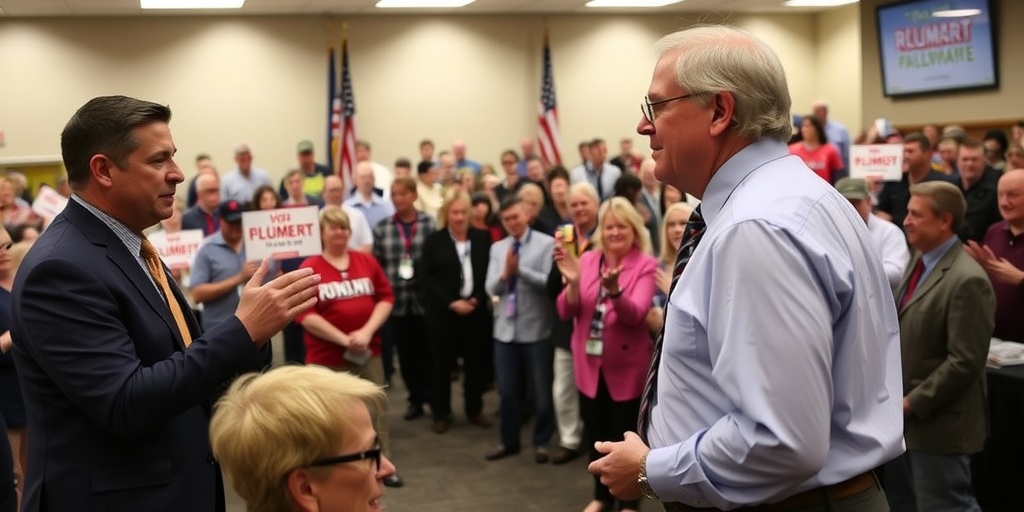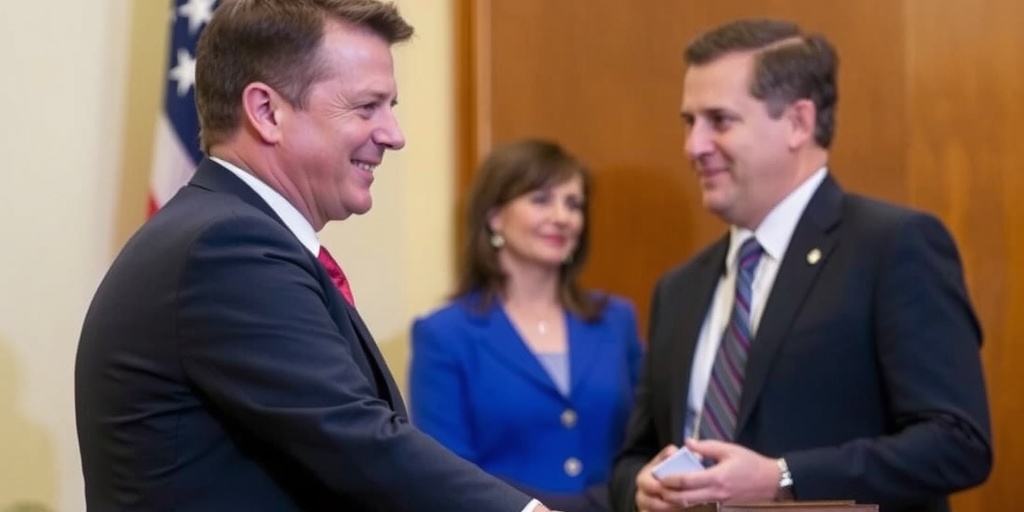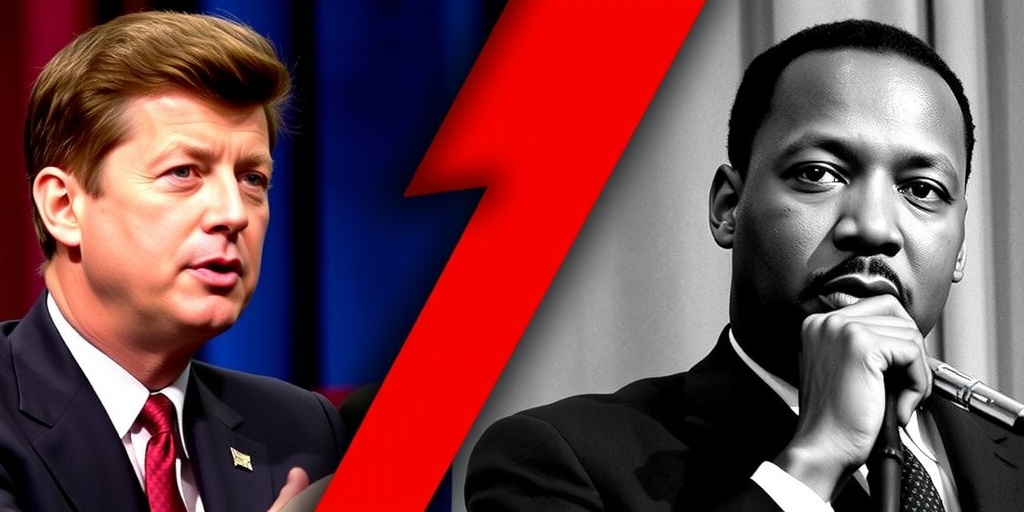Now Reading: Rotunda Ransacked by Pro-Trump Mob to Serve as Inauguration Backdrop
-
01
Rotunda Ransacked by Pro-Trump Mob to Serve as Inauguration Backdrop
Rotunda Ransacked by Pro-Trump Mob to Serve as Inauguration Backdrop
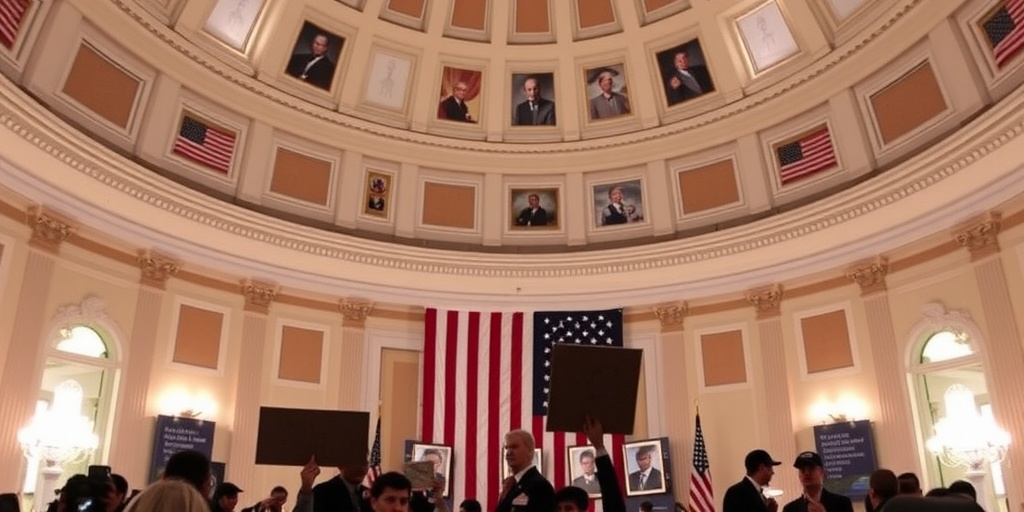
Trump’s Inauguration: A Reflection on the Rotunda’s Dual Legacy
On Monday, Donald J. Trump will be inaugurated for a second time, assuming the presidential oath in an extraordinary indoor ceremony beneath the renowned Capitol dome. This historic event will take place in the Rotunda, an iconic space filled with splendor, where a multitude of dignitaries, lawmakers, and devoted supporters will gather to witness the momentous occasion.
The Rotunda, expansive and ornate, draws inspiration from the Pantheon in Rome. It has served as a sacred site for significant moments in American history, housing the remains of presidents and providing a backdrop for solemn national ceremonies. However, the atmosphere of reverence that typically fills the Rotunda stands in stark contrast to events that unfolded just four years prior.
On January 6, 2021, the same majestic hall became the scene of chaos and turmoil as a mob of Trump supporters stormed the Capitol in a violent attempt to thwart the certification of Joe Biden’s election. Fueled by former President Trump’s unfounded claims of a stolen election, rioters descended upon the Rotunda, clashing with law enforcement and creating a scene that shocked the nation. This shocking display saw some individuals climbing onto the statues of esteemed American figures, including Presidents Ronald Reagan and Gerald Ford, as they moved through the historically significant chamber in their misguided quest to disrupt the joint session of Congress. The once-immaculate space was left in disarray, littered with trash and debris, leaving many visitors and citizens in disbelief.
In the aftermath of this unprecedented insurrection, a somber tranquility replaced the chaos as the Capitol was cleared and congressional proceedings resumed to certify the election results. In the early hours of January 7, former Representative Andy Kim, a Democrat from New Jersey, made his way to the Rotunda. Armed with a trash bag, he began the process of cleaning up the mess left by the rioters. The poignant image of Kim, a Rhodes scholar and former national security official, sweeping the floor of such a storied space symbolized the hope that one individual could help restore some dignity to a site that had been marred by violence. During a speech at the Democratic National Convention in Chicago last summer, he reflected on that day, grappling with the weight of what transpired, saying, “I thought to myself, ‘How did it get this bad?’ So I did the only thing I could think of: I grabbed a trash bag and started cleaning up. What I learned on January 6 is that all of us are caretakers for our great republic. We can heal this country, but only if we try.”
The imagery from that January day remains etched in the minds of many as Trump prepares to take the oath in a chamber adorned with grand paintings depicting pivotal moments of early American history, such as Columbus’s landing and the signing of the Declaration of Independence. These images serve as a stark reminder of the contrast between the ideals of democracy and the harsh realities of political extremism that manifested in 2021.
In a move that has drawn significant attention and criticism, Mr. Trump has indicated that one of his first actions as president will be to issue pardons for individuals prosecuted for their roles in the assault on the Capitol. This announcement raises questions about accountability, justice, and the future of American democracy. Many critics argue that such pardons could undermine the rule of law and set a concerning precedent for political leaders who incite violence.
As the nation looks ahead, Trump’s second inaugural ceremony will undoubtedly provoke reflection on the lessons of the past, the complexities of leadership, and the continuing journey toward unity and healing. The memory of the January 6 insurrection and the subsequent cleanup by dedicated individuals like Andy Kim serve as a testament to the resilience of democracy and the importance of collective responsibility.
As Trump prepares to be sworn in once again, the Capitol Rotunda stands not merely as a setting for an inauguration but as a poignant symbol of both the tumultuous past and the aspirations for a more united future. The dichotomy of celebration and caution will resonate, as the American public watches closely what this new chapter will bring. In these moments, the hope remains that the values of democracy, justice, and civic duty will prevail.
Stay Informed With the Latest & Most Important News
Previous Post
Next Post
-
 01New technology breakthrough has everyone talking right now
01New technology breakthrough has everyone talking right now -
 02Unbelievable life hack everyone needs to try today
02Unbelievable life hack everyone needs to try today -
 03Fascinating discovery found buried deep beneath the ocean
03Fascinating discovery found buried deep beneath the ocean -
 04Man invents genius device that solves everyday problems
04Man invents genius device that solves everyday problems -
 05Shocking discovery that changes what we know forever
05Shocking discovery that changes what we know forever -
 06Internet goes wild over celebrity’s unexpected fashion choice
06Internet goes wild over celebrity’s unexpected fashion choice -
 07Rare animal sighting stuns scientists and wildlife lovers
07Rare animal sighting stuns scientists and wildlife lovers













